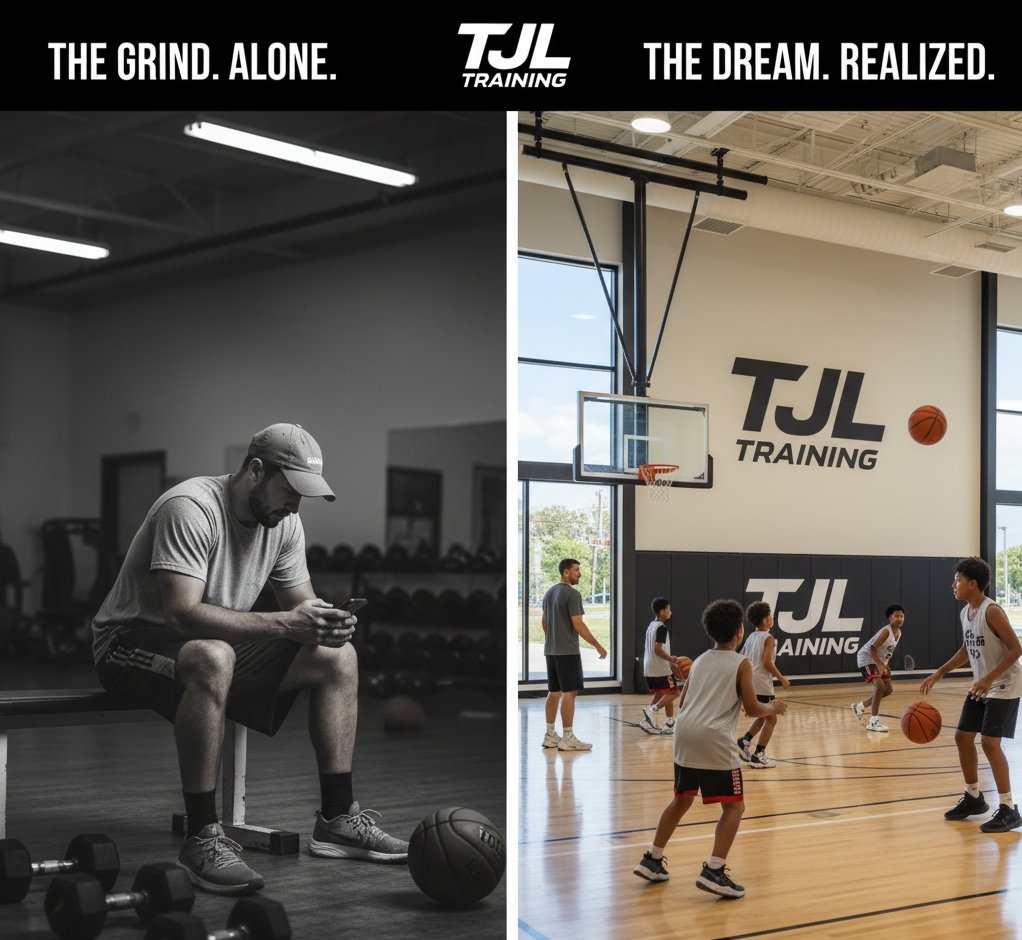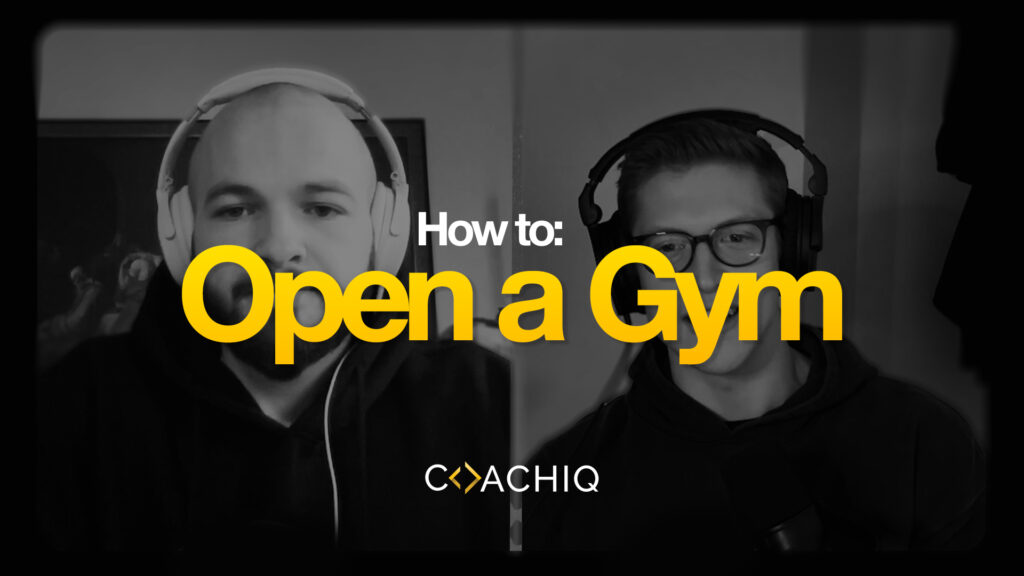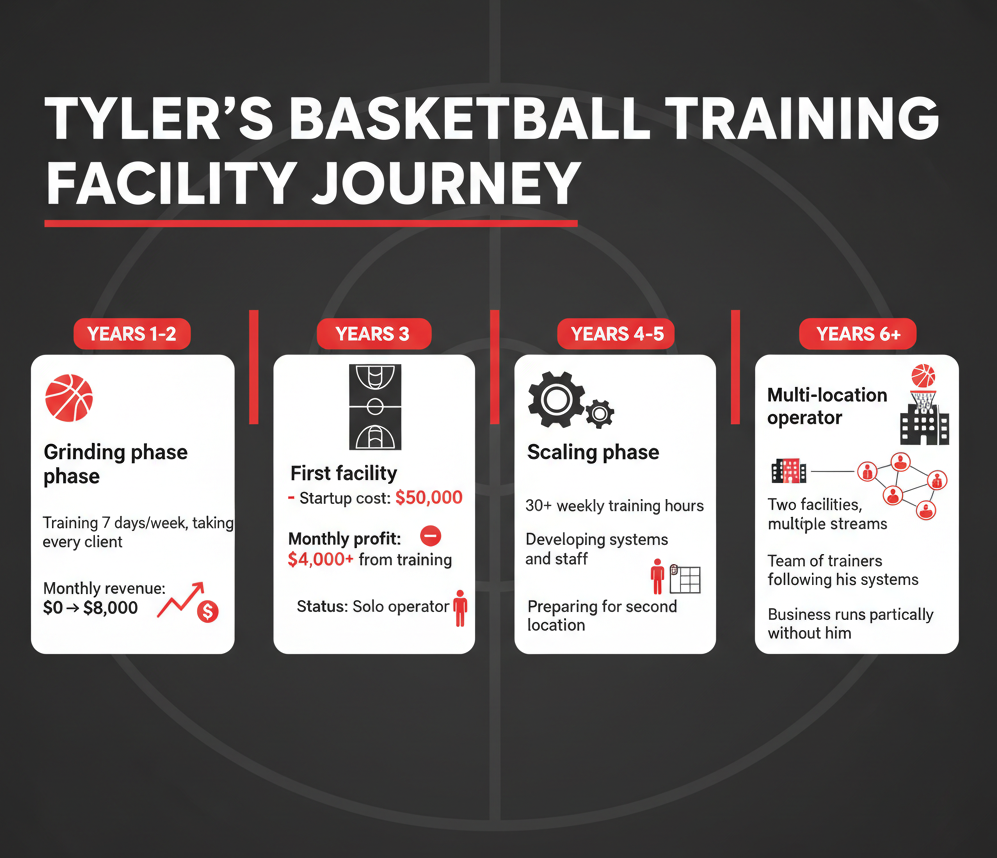Most basketball trainers dream of opening their own facility. The vision is clear: your own space, your own schedule, complete control over your business.
But the reality? That’s where most trainers get stuck.
Tyler Leclerc knows both sides of that story. The Massachusetts-based trainer spent two years training anyone “with legs and arms that could throw a basketball” — often clients he didn’t want to work with, dealing with last-minute cancellations, payment chasing, and the constant grind of renting gym space.
Today, he operates two thriving facilities 20 minutes apart, has built a reputation as one of the most respected trainers in New England, and co-founded Master of Hoops with Coleman of By Any Means Basketball.
In this episode of the CoachIQ Podcast, Tyler breaks down the real journey, the systems that made scaling possible, and the hard lessons every trainer needs to learn.
The Two-Year Grind Nobody Talks About
“I think a lot of people get into training, they start training for a week, they have five clients, so they’re like, ‘Hey, I want to go open a gym,'” Tyler explains. “That’s not it.”
Before Tyler was ready to sign his first lease, he spent two years building the foundation:

- Training 7 days a week — Every available hour was spent on the court
- Taking every client — Even the ones who were disrespectful or constantly canceled
- Saving relentlessly — Every dollar went toward the future facility fund
- Building reputation — Word of mouth in the local basketball community
Tyler needed three things before approaching a landlord:
- Consistent cash flow ($8,000/month in training revenue)
- Startup capital (Eventually $50,000 for first/last/security, court installation, equipment)
- Established clientele (30+ hours of weekly training sessions)
“You’re going to go approach a landlord where the lease is five, six grand a month, and they’re going to laugh at you because you made $500 last month,” he says. “You need to build up a legitimate business, a legitimate clientele to even be in the position to get that gym.”
The Breaking Point That Changed Everything
Tyler’s opportunity came during COVID when gyms shut down and reopened with dramatically higher rental rates — some facilities tripled or quadrupled their court fees.
That’s when the economics shifted.
“I did the calculations. I was like, I can pay for my own gym and spend just as much money every month as I was renting the court,” Tyler recalls. “At that point, it just made sense.”
With 30 hours of weekly training and $3,000-4,000 in monthly court rental fees, Tyler realized he wasn’t just paying for access anymore — he was paying someone else’s lease.
Read the full financial breakdown: The Real Cost of Opening a Basketball Training Facility in 2025
The Admin Work That Almost Broke Him
Here’s what nobody tells you about the training grind: the actual training is the easy part.
Tyler estimates he was spending 10+ hours per month just on:
- Texting parents back and forth about scheduling
- Chasing payments (the dreaded “Hey, can you Venmo me?” texts)
- Remembering who paid, who didn’t, who owes for last week
- Managing cancellations and rescheduling
- Coordinating gym rentals and availability
“That mental energy is way worse than the time,” Tyler admits. “You’re thinking about it constantly — ‘Johnny didn’t pay me for that session, I have to remember to text him.’ All that mental energy adds up.”
This is where most trainers stay stuck. They’re making decent money ($60-100/hour) but trading every hour for dollars, drowning in admin work, and burning out.
The System That Changed the Game
Tyler’s advice? Invest in scheduling and payment automation as early as possible.
“Sometimes trainers are like, ‘I don’t want to pay for the software.’ Dude, you’re thinking very, very small and very short-term,” he says. “Maybe the first month you don’t technically make your money back on that investment. But the amount of mental energy and time you gain back is going to help you tenfold over the long term.”

Modern coaching platforms like CoachIQ’s scheduling system eliminate the text-thread chaos by letting parents book sessions online, view availability in real-time, and manage their own schedules. No more back-and-forth. No more double bookings.
Even better? Automated payment processing means no more Venmo requests, no more chasing cash, no more mental overhead tracking who owes what.
Tyler’s rule of thumb: If you’re training 15+ hours per week and still manually scheduling everything, you’re leaving money on the table.
The Delegation Breakthrough
“You can’t do everything yourself,” Tyler emphasizes. “You have to learn how to delegate, you have to know how to trust other people, you have to essentially develop other people and have systems in place.”
The trainers who fail at scaling are the ones who believe:
“Nobody else can coach like me”
“I need to be involved in everything”
“Systems make it feel less personal”
Tyler’s evolution required letting go:
❌ Taking every phone call personally
❌ Micromanaging every session
❌ Manually scheduling across two locations
✅ Building systems that work without him
✅ Trusting trained staff with his methodology
✅ Using technology to coordinate remotely
This is where centralized client management becomes critical.
The Timeline Reality Check

Let’s be honest about Tyler’s journey:
Years 1-2: Grinding phase
Year 3: First facility
Years 4-5: Scaling phase
Year 6+: Multi-location operator
This isn’t a “quit your job and open a gym next month” story. It’s a patient, systematic build that compounds over time.
Resources That Actually Matter
Tyler’s recommended learning path:
Trevor Ragan — Science of learning fundamentals
“The Language of Coaching” — How your words affect skill acquisition
Constraints-led approach books — Ecological dynamics
“Our whole goal as trainers is to help people learn,” Tyler notes. “Get as much experience, get as much knowledge, combine the two together.”
The Systems That Set You Free
The common thread through Tyler’s entire journey? Systems replace hustle. In the early days, hustle is necessary. You outwork everyone. You take every client. You grind. But to scale, you need systems that work without you:

✅ Automated scheduling so parents book themselves
✅ Recurring payments that eliminate transaction friction
✅ Client management that tracks progress across coaches
✅ Communication tools that keep everyone informed
CoachIQ’s platform was built specifically for trainers like Tyler — coaches who want to scale beyond trading time for money. The integrated system handles scheduling, payments, and client management in one place.
Because at the end of the day, you didn’t become a trainer to spend 10 hours a week texting parents about schedules.
Your Move
Tyler’s story proves the path exists. But it requires patience, systems, and persistence when everyone else quits.
Ready to build the systems that scale your training business?
Book a CoachIQ demo to see how the platform handles scheduling, payments, and client management for multi-location operations.
Learn more from Tyler Leclerc:
- Website: tjltraining.com
- Instagram: @TJLTraining
- YouTube: TJL Training
Listen to the full conversation: CoachIQ Podcast Ep 02 | Tyler Leclerc’s Scaling Story

